
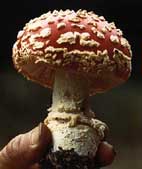
Underworld
is a journey through the reaches of an entire kingdom of life. The visual
style has to penetrate the built-up resistance and prejudice that many
people have developed. The visuals must provoke a shift in perspective:
they must be fun, imaginative and wondrous.
Take the audience on a journey from microscopic spores through miles of webbed filament only to emerge out from a pinch of soil. Continuing further out – rising above the canopy of trees until huge forest landscapes emerge and outlines are shown of the world’s largest organism, and then up further still, beyond the atmosphere of this planet, and show the fungus which thrived on the International Space Station Mir. The film will journey through the continents to see worldwide fungal presence and variety, and through the ecosystems to show how fungi are keystone organisms of all habitats - from forest to jungle, and dune to desert. This is a voyage from habitat to laboratory to dinnerplate: witness the history of fungal development past and future, from ancient shamanic depictions in Arabian caves to the subterranean basins under Paris where indoor cultivation began.
Watch the stunning experiments by Japanese mycologists – as slime
molds successfully navigate their way through
a maze!
Photo: Nakagaki. Bio-Mimetic Control Research Centre
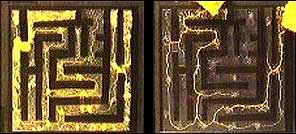
Present the kingdom with a sense of wonder, passion and excitement. The
film will be much more than an illustrated field guide. A series of pretty
mushroom pictures would not sustain itself, nor would it capture the dynamics
and sweep of the kingdom; that said, it is important to show the mushrooms
as beautifully as possible, in all their glory – with photography
that will capture their colors, textures and forms. What is the point
of a documentary on fungus unless the mushrooms come across as truly gorgeous
and magnificent? The actual mushrooms will be approached with a Microcosmos-style,
exploring their folds, rising up the stalks and careening over dew laden
caps.

photo sequence from Death by Design
Time lapse photography will capture the dynamics of fungus –
see mushrooms exploding out of the ground, rising and falling in a matter
of seconds. Watch fungus decompose rotten food in an instant and see the
forest floor be covered in swells of different mushroom patterns –
in a rhythmic and musical display – as whole patches rise and fall.
Slowed down photography also reveals some of the extraordinary mechanisms
that mushrooms can use to disperse their spores, as evidenced by the whirling
whisps and chimney-like vapours that appear out of the top of a puffball
following contact with a single droplet of rain.
The camera will venture into
the microscopic realm, both in the petri dish and through scanning electron
micrography. Penetrate the gills of a mushroom and see the landscapes
where the tiny spores grow and release. See mycelium ripping across the
screen in extreme close up. Then venture further in, to the very edge
of the spreading mycelium and see even more amazing interactions.
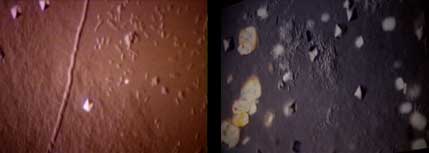
Watch armies of messenger crystals marching in front of the spreading fungus. These crystals act as a reconnaissance unit for the mother mycelium and can signal impending danger such as deadly e-coli (0157 strain) bacteria. Watch in amazement as the fungus responds by producing secondary crystals which are then sent up “to the front lines.” The bacteria swarm to the crystals, are immobilized and the mycelium moves ahead and gobbles them up. The view of these interactions is bizarre and fantastic, almost like a war on an alien landscape. At every scale, the journey through the fungal kingdom is remarkable. photos: Paul Stamets
Visual analogies are another technique that is going to be employed
often – showing how fungal life has parallels all around, in our
expansive subways, the swells of WTO protesters, or even weather patterns.
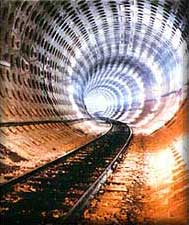 Watching
clouds form huge blankets stretching through the air, the audience will
start to grasp the extended reach of underground fungus - enormous creatures
that move and grow in a similar way. In order to visually explain how,
for example, thousands of different mycelium can co-habitate in a single
meter of soil, footage of clouds interspersing and passing through each
other will be used.
Watching
clouds form huge blankets stretching through the air, the audience will
start to grasp the extended reach of underground fungus - enormous creatures
that move and grow in a similar way. In order to visually explain how,
for example, thousands of different mycelium can co-habitate in a single
meter of soil, footage of clouds interspersing and passing through each
other will be used.
These types of visual metaphors can be very effective and also very fun
- a technique that Peter Friedman’s Death
by Design used to great success. The huge sprawl of a city in
the rain, with legions of umbrellas beneath is a metaphor for the mushrooms
under massive old-growth trees. Beneath the city, huge networks of tubes,
the sewers and subways, keep everything going – just like the mycelium
in the forest. The communications network that covered Paris, the air
compressed tubing system called the pneumatique, and the present-day Internet
also serve as models through which one can understand fungi more clearly.
How like a fungus are the meandering streets and emergent neighborhoods
of a city? Of a brain? Of a river delta? And what of the bridge builders,
garbage collectors and recyclers? Picture the fungus as it attacks an
enemies, by crosscutting it with scenes of raging barbarian hordes.
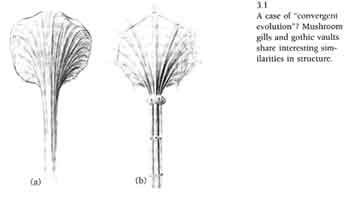 We will see the impact on art and architecture: the inspiration for Gothic
Vaults, the umbrella, domes. Depictions of mushrooms in art range from
ancient interpretations in First Nations Art to etchings on the sides
of Egyptian tombs, all the way to TinTin and the Smurf village.
We will see the impact on art and architecture: the inspiration for Gothic
Vaults, the umbrella, domes. Depictions of mushrooms in art range from
ancient interpretations in First Nations Art to etchings on the sides
of Egyptian tombs, all the way to TinTin and the Smurf village.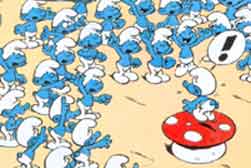
There are scores of fantastic archive footage, showing Alexander Fleming’s early experiments and early CIA testings of LSD on their own unsuspecting army. Furthermore, there are several films that feature mushrooms prominently, parts of which (rights pending) will be used, including: The Attack of the Mushroom People, the Clint Eastwood picture Beguiled, Willy Wonka and the Chocolate Factory, episodes of The X-Files, X-Men and Star Trek, and the dancing mushrooms from the original Fantasia.
The film will be tied together through a series of interviews. There will
not be a single, guiding personality/narrator, but rather a series of
perspectives representing the range of people who touch the kingdom both
directly and peripherally.
Desired Interview subjects include:
Dr.
David Suzuki discusses biodiversity and mycorrhizae
Paul Stamets discusses future technologies,
toxic waste remediation
George
Hudler discusses folklore, the history of fungus on humanity
Dr. Andrew Weil
discusses health and nutrition
Bob Dylan
discusses first hand experience of mycotoxins
Suzanne
Simard discusses forest ecology and intercommunication
James Arthur discusses
spirituality, sacraments, religions and Santa Claus
Bryce Kendrick discusses
the spectrum of behaviour and fungal parasites
The
film will be a combination of styles- like Death by Design meets
Fast, Cheap and Out of Control meets Microcosmos.
